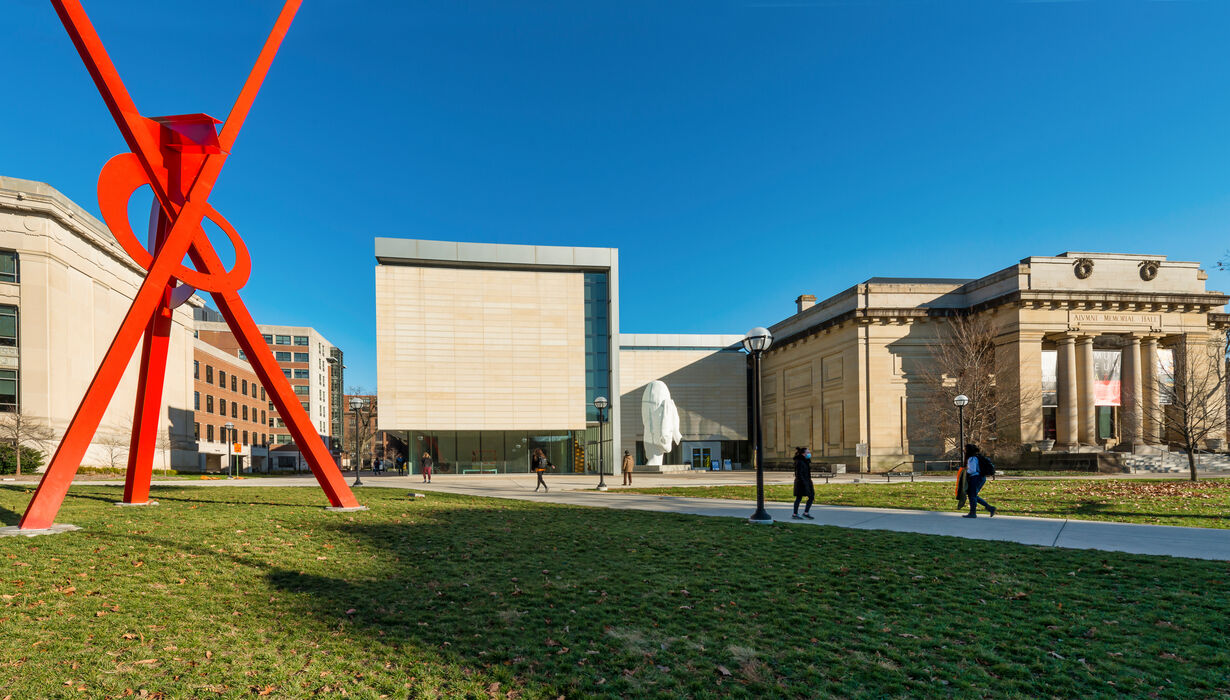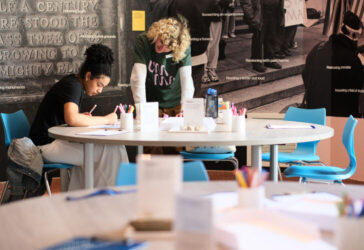Meet
UMMA
The University of Michigan Museum of Art believes that life is better when it is shared — shared with others, and shared with art.
Our Mission
The U-M Museum of Art puts art and ideas at the center of campus and public life. We create experiences that enrich our understanding of one another, foster joy, and build a more just future. Through exhibitions, programs, research, and community partnerships, we are redefining what a campus museum can be.
About the DirectorHow do we lead real change in museums, so that the communities we care about can thrive in the 21st century? This is the question that we strive to answer every day at UMMA.


Special Projects & Initiatives
To redefine what it means to be an art museum means doing new and unexpected things. More than just exhibitions and programs, UMMA is leading the charge to create new forms of artistic innovations. Explore some of our projects and initiatives:

Hands-on, immersive experiences for graduate students in Chinese Art History. Supported by the Kingfisher Foundation, this global program is dedicated to preserving and advancing the tradition of direct object study.

As part of a nationwide coalition of campus art museums, UMMA is working to bring together leaders from coast to coast to experiment with bold, new collaborations.

In partnership with the Ann Arbor City Clerk’s Office, the Creative Campus Voting Project and the UMICH Votes Coalition UMMA hosts election hubs in a central Museum gallery to expand access to democracy and create new kinds of civic spaces.

With myUMMA, online visitors have access to interactive creation tools powered by UMMA’s entire collection. myUMMA unlocks new ways to use UMMA’s art to react to and speak to the present moment. Users can curate their own collections, create lesson plans, save favorite works of art, and share curated collections with friends, family, classmates, students, or the world.

An in-public investigation into 11 objects of African art in UMMA’s collection, proactively engaging with debates about restitution and the ethics of museums’ owning African heirlooms collected during the era of colonization. Research for this project is still available to explore online.

A collaborative exhibition, research, and digital archive project developed by a team of co-curators based at UMMA, the Ghana Museums and Monuments Board, and Kwame Nkrumah University of Science and Technology in Kumasi, Ghana.
Leadership and Staff

Meet the staff, learn more about those who make UMMA possible, and reach out using our directory.

The UMMA Executive Committee advises the Director on issues of general policy, ethics, and strategic relationships.

The UMMA Executive Committee advises the Director on issues of general policy, ethics, and strategic relationships.

The Student Advisory Board (SAB) is dedicated to creating a culturally inclusive community through programmatic efforts, and amplifying student voices to shape the museum.
Collection
Highlights
Feel ready to dive in? It’s right here — your next source of inspiration.
Leadership and Staff

Meet the staff, learn more about those who make UMMA possible, and reach out using our directory.

The UMMA Leadership Board (ULB) is a volunteer advisory board created and supported by UMMA to provide strategic guidance on issues of advocacy and fundraising for the Museum.

The UMMA Executive Committee advises the Director on issues of general policy, ethics, and strategic relationships.

The Student Advisory Board (SAB) is dedicated to creating a culturally inclusive community through programmatic efforts, and amplifying student voices to shape the museum.

Hands-on, immersive experiences for graduate students in Chinese Art History. Supported by the Kingfisher Foundation, this global program is dedicated to preserving and advancing the tradition of direct object study.

As part of a nationwide coalition of campus art museums, UMMA is working to bring together leaders from coast to coast to experiment with bold, new collaborations.

In partnership with the Ann Arbor City Clerk’s Office, the Creative Campus Voting Project and the UMICH Votes Coalition UMMA hosts election hubs in a central Museum gallery to expand access to democracy and create new kinds of civic spaces.

With myUMMA, online visitors have access to interactive creation tools powered by UMMA’s entire collection. myUMMA unlocks new ways to use UMMA’s art to react to and speak to the present moment. Users can curate their own collections, create lesson plans, save favorite works of art, and share curated collections with friends, family, classmates, students, or the world.

An in-public investigation into 11 objects of African art in UMMA’s collection, proactively engaging with debates about restitution and the ethics of museums’ owning African heirlooms collected during the era of colonization. Research for this project is still available to explore online.